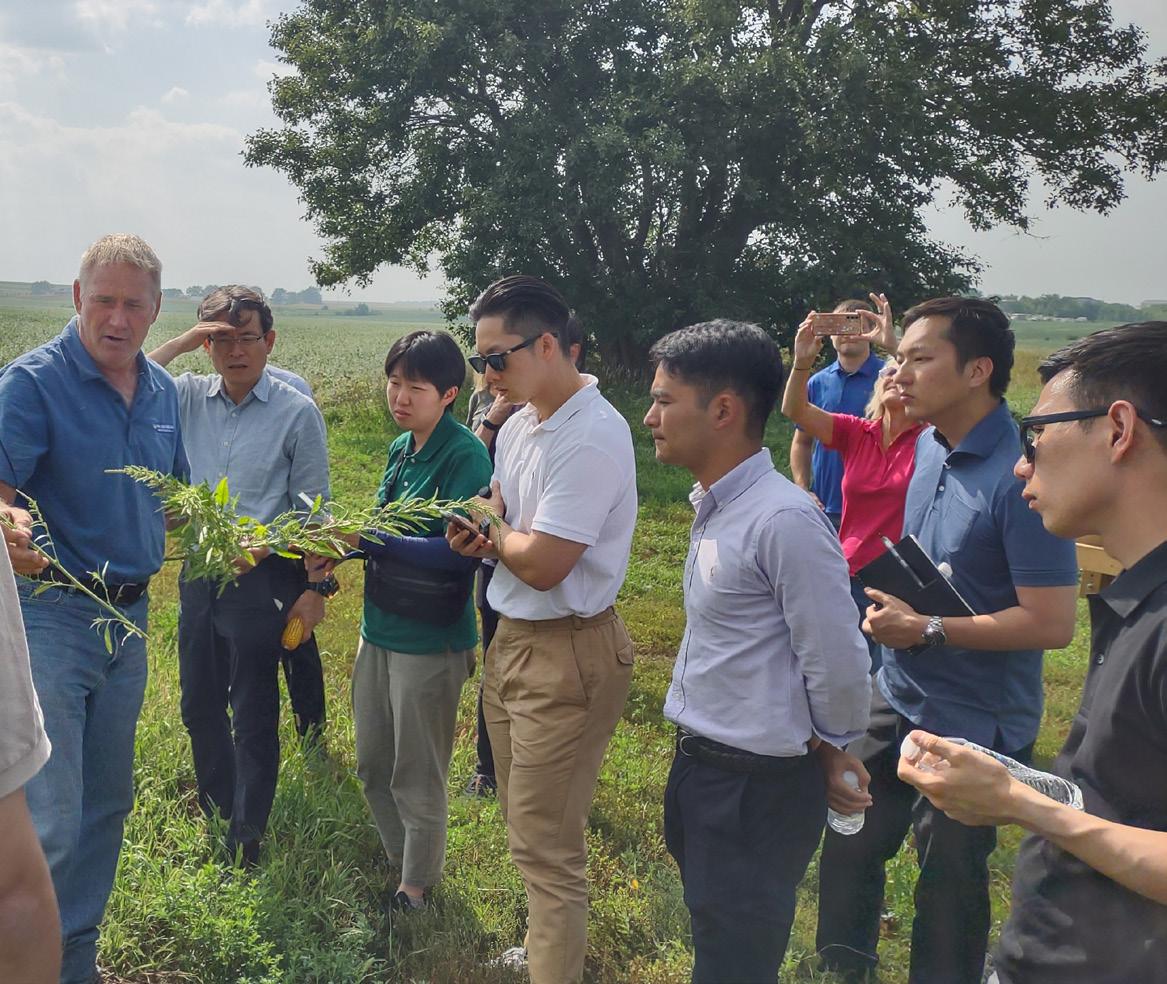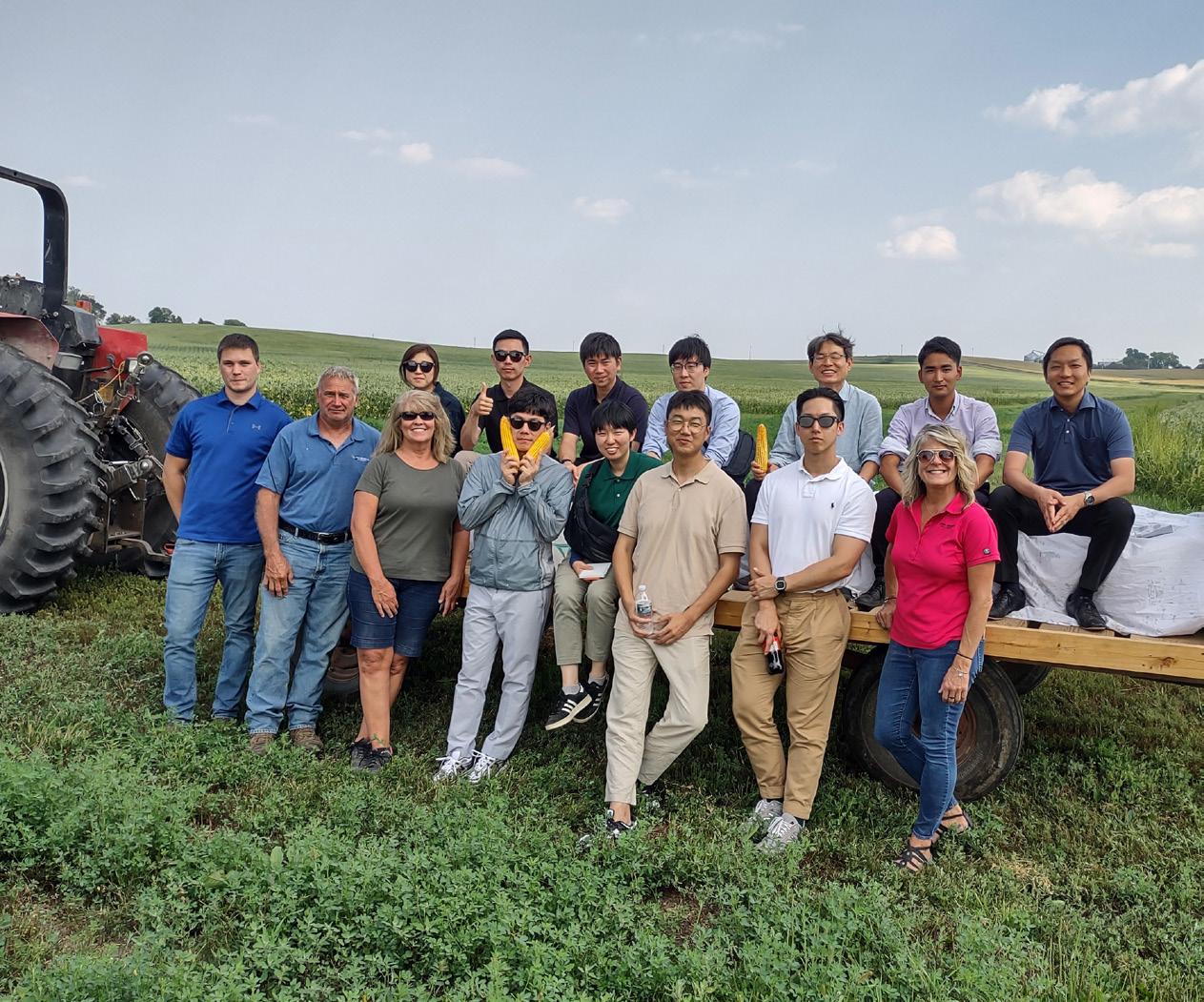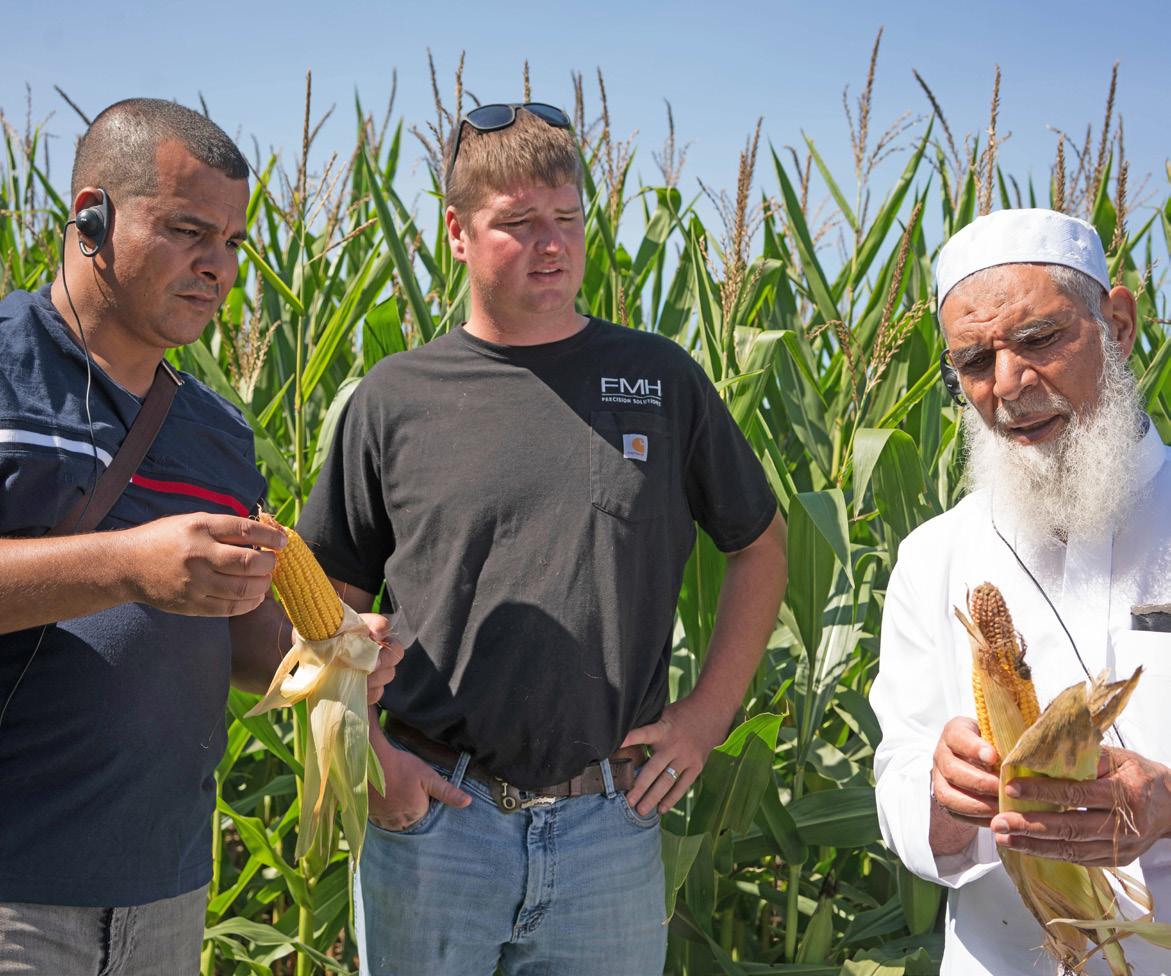
5 minute read
Open for Business
Iowa Soybean Farmers Host International Visitors
By Joseph Hopper, jhopper@iasoybeans.com; Kriss Nelson, knelson@iasoybeans.com; and Jeff Hutton, jhutton@iasoybeans.com
Iowa Soybean Association (ISA) farmer-members welcomed visitors from across the globe to their farms ahead of harvest. The visits were facilitated by the U.S. Soybean Export Council (USSEC) and hosted by ISA, which welcomes visitors to the state year-round. These international trade teams are typically comprised of business professionals involved in the soybean industry.
“It’s important to build relationships because relationships matter when doing business,” says Grant Kimberley, senior director of market development at ISA. “People want to do business with people they know and understand how we grow our crops and the care we take with it.”

The first team to make their visit in the summer hailed from The Maghreb, the northwest region of Africa which includes the countries of Algeria, Libya, Morocco, Tunisia and Mauritania. Roger Van Ersvelde, who farms near Brooklyn, showed off his equipment, storage and examined the crops growing in the field.
“I love showing what we can do in production agriculture, how we’re doing things that are positive for the environment and positive for the world by producing the amount of food we can for them,” Van Ersvelde says.
Traveling from Algeria across the Atlantic Ocean and to Iowa, Abdelkader Khider, of the Khider Group, was all smiles during the visit. He said the on-farm visit was an exciting experience and he enjoyed learning about the varieties of crops grown in Iowa as well as the high-tech equipment used on the farm.
“I’m very happy, to see how you grow crops here and also in terms of harvesting,” says Khider. “I do believe that the equipment that you have here is better than ours.”

International dialog
Teams continued to make their way onto Iowa farms through the month of August. Delegates from Japan and South Korea visited ISA District 4 Director Marty Danzer’s farm in Carroll County. ISA District 1 Director Brent Swart, former ISA Director Chuck White and former ISA District 5 Director Morey Hill also hosted trade teams.
For Swart, the tour wasn’t just a chance to field questions, but also an opportunity to ask visitors what they want in American soybeans?
“They wanted to know how we (U.S. growers) can differentiate ourselves from China, Argentina and other meal exporters,” he says. “They probably didn’t care as much about quality as some other meal purchasers. It was really about price for them.”

Swart says he was appreciative of the honesty from his guests, because as exporters, American soybean producers should want to produce a more affordable soymeal product, given the increase in interest in soy oil and crush capacity.
Both Swart and Danzer say the trade tour offered clear indications of what buyers are looking for and that Iowa soybeans will be the first thing that comes to mind when Korea, Japan and other foreign markets are looking for quality, affordable soybeans.
“I certainly learned from the experience, and I believe they learned from it,” Danzer says.
“The value is there,” Swart says. “Hopefully they’ll think of us first.”

Putting a face to a grain
Visiting Calhoun County later that month, the China Sustainability Team were seeking to learn more about crop conditions, how they compare to the U.S. Department of Agriculture (USDA) reports and operating costs when visiting Randy Souder’s farm.
Souder, a Calhoun County farmer and past ISA director, pointed out to the group that he expected lower soybean yields because of the dry conditions in his area. The prediction caught the group’s attention while they scouted soybeans, learning how to predict yields by counting pods.
Wang Yabing, assistant purchasing director for Guangxi YangXiang Co., Ltd. from the Guangxi Province in China, says this was his third time visiting the United States and second visit to Iowa.
“Iowa is the second largest state in soy production in the U.S., and we are grateful for the invitation,” he says. “We have a lot of demand for soybeans, and we appreciate the views on planting acreage; the information is very useful for us.”
Souder and his wife Cindy have previously opened their farm to trade groups.
“It’s a good experience. Not only can we share our story, but we can also learn about agriculture in their country,” says Souder. “We show them we are human. We are trying to make a living for our family, the same way they are trying to make a living for their family. It helps to put a face to the bushel of grain they receive.”









